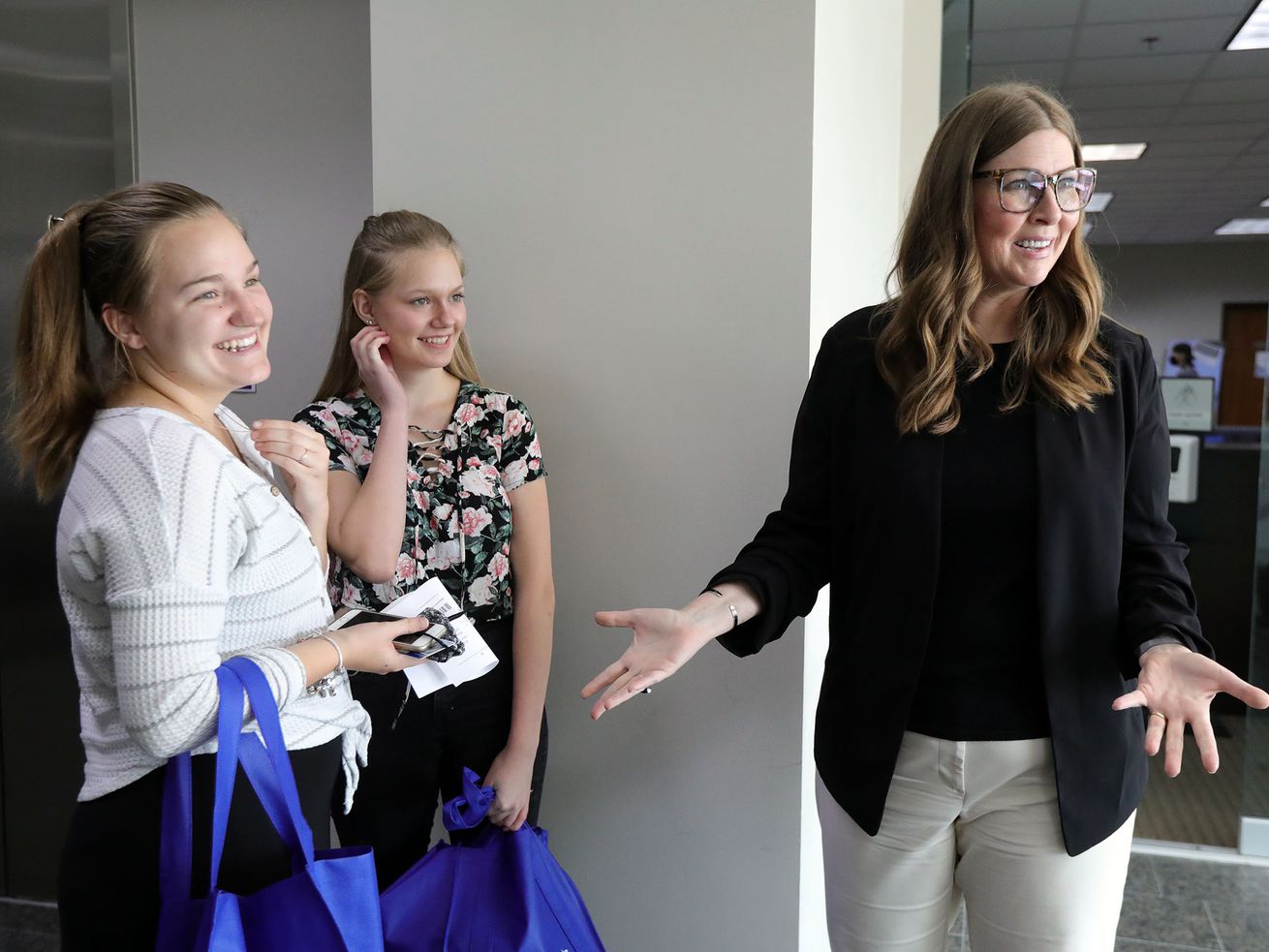
No mask, no problem. At Mountain Heights Academy, it’s always virtual, pandemic or not
A dozen years ago, when 125 students signed up for classes at Utah’s first public online school, DeLaina Tonks dreamed of the day when 10 times that number would enroll.
She just didn’t dream it would take an infectious plague to make it happen.
As disruptive as COVID-19 has been, some things have proven impervious to its chaos.
Mountain Heights Academy, for one.
Lockdown. Sheltering in place. Social distancing. Videoconferencing. They’d already been doing that for years.
* * *
As principal of Mountain Heights Academy since its inception in 2009 — it was first called Open High School until grades seven through nine were added in 2012 — Tonks has watched a slow and steady growth as students around the state have discovered, for various reasons, that virtual school is the best fit for them.
Some are athletes or actors or dancers who take their school-in-a-laptop along with them as they travel far and wide to pursue their dreams. Others require extra emotional or physical support or assistance. Still others are what Tonks refers to as “mainstream kids who do not want to deal with swirlies in the bathroom.”
“It’s not the right fit for everyone,” she says, “but it’s the best fit for a lot of kids.”
When the pandemic came along, it became the best fit for a whole lot more.
Enrollment for the 2019-20 school year was 800. In 2020-21 it almost doubled to more than 1,400.
All around the state, students and their parents clued in to the fact that online school was something the virus couldn’t touch, and that Mountain Heights, in sharp contrast to mainstream schools trying to figure out virtual teaching on the fly, was really good at it.
Tonks remembers the empathy she felt for mainstream teachers who were suddenly asked to teach live in a classroom while simultaneously teaching online and having that recorded for the students who couldn’t be there when they were doing it live.
“My heart goes out to all of our brick-and-mortar colleagues across the state because they had a rough year and a half trying to figure out how to do all three of those types of learnings,” she says. “They had to teach in three different modalities, and that’s just a lot to ask.”
Meanwhile, at Mountain Heights, staffed with teachers and administrators trained and practiced in the art of online teaching, “we did not miss a beat.”
As word spread, students began showing up on MHA’s doorstep — well, virtual doorstep — every single day. So did teachers. A staff that started out at 90 grew to 162. Tonks was hiring people practically nonstop.
It helped that it didn’t matter where the teacher lived. “We can choose from the entire state,” she says. “If we were boundary limited it would have been a lot harder.”
Some MHA teachers came down with COVID-19, as did some students, but very few students got behind and the school didn’t have to replace a single faculty member. “Probably 15 to 20 of our teachers got COVID that I know of,” says Tonks. “They were down for a couple of days, but you can do a lot online even when you’re sick in bed as long as you’re cognitively OK.”
When the smoke cleared from the train wreck that masqueraded as the 2020-21 school year, researchers at Stanford University, according to Tonks, estimated that Utah students lost on average 155 days of reading and 307 days of math as a result of the disruptions caused by the pandemic. The Mountain Heights Academy kids were the exception to that metric. They stayed right on pace.
When the 2021-22 school year opened at Mountain Heights last week, Tonks reported that enrollment was still hovering at the high-water mark of 1,400, and that’s with another month open for enrollment.
“We’ve got kids pouring in, several who went to their neighborhood school for a week and decided to come back to us,” she says. “For whatever reasons, they found this worked better for them.”
Online schooling — at Mountain Heights as well as at other virtual schools becoming more prevalent in the state — still represents a mere drop in the bucket in a Utah public school system with nearly 700,000 students. But the pandemic put a spotlight on an alternative form of schooling that thrives in mitigating circumstances.
As a case in point, Tonks talks about the rodeo cowboys who are enrolled at Mountain Heights. Thanks to the Chromebooks they tuck up underneath their arms, these teenage bronc riders and cow busters can ride the circuit and as long as there’s an internet connection, still do their schoolwork and graduate high school.
Sometimes being apart from the crowd just makes sense.
